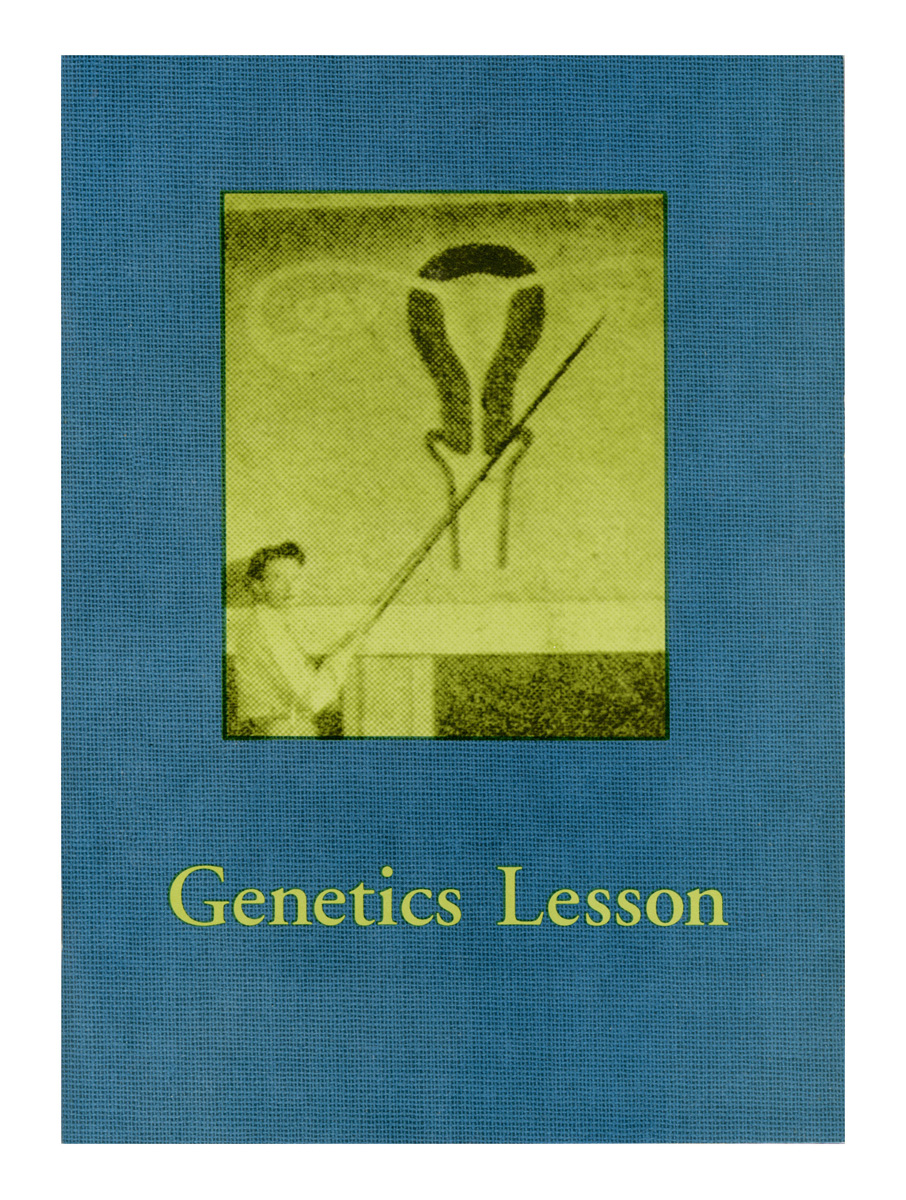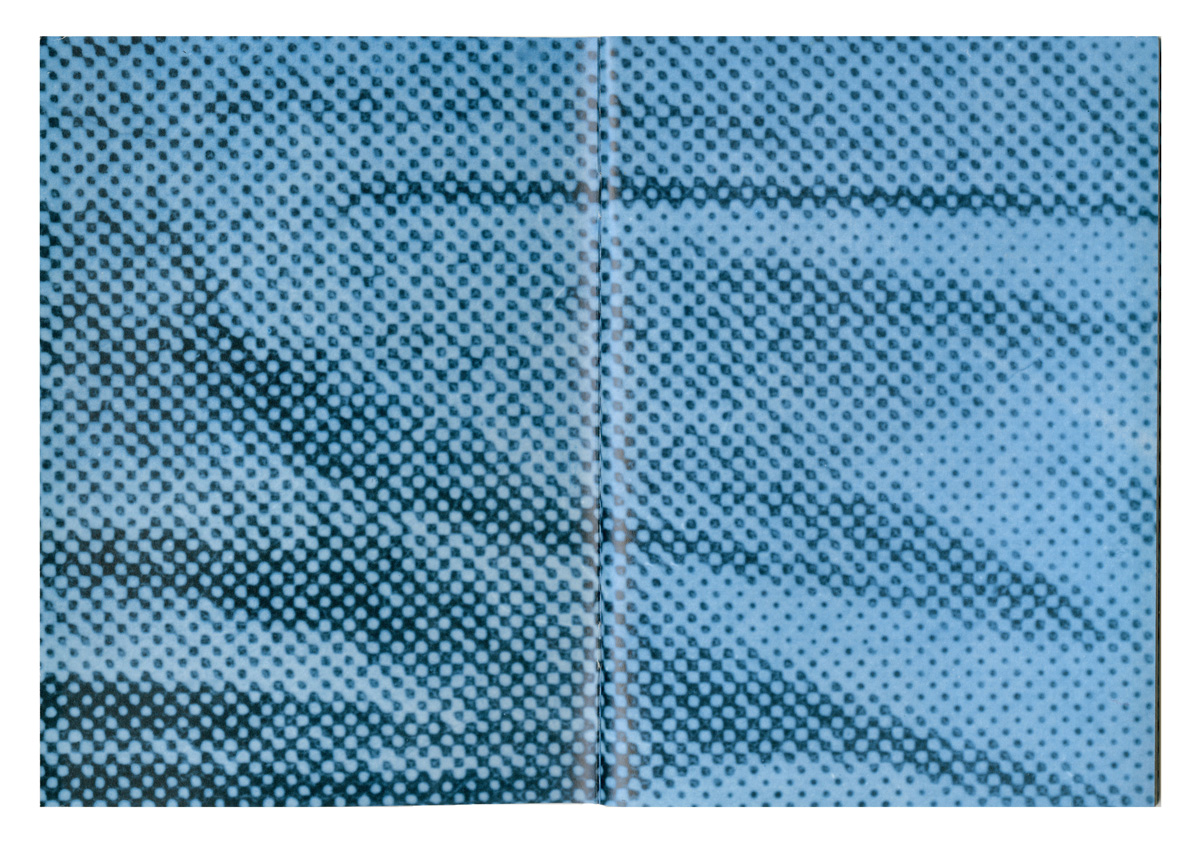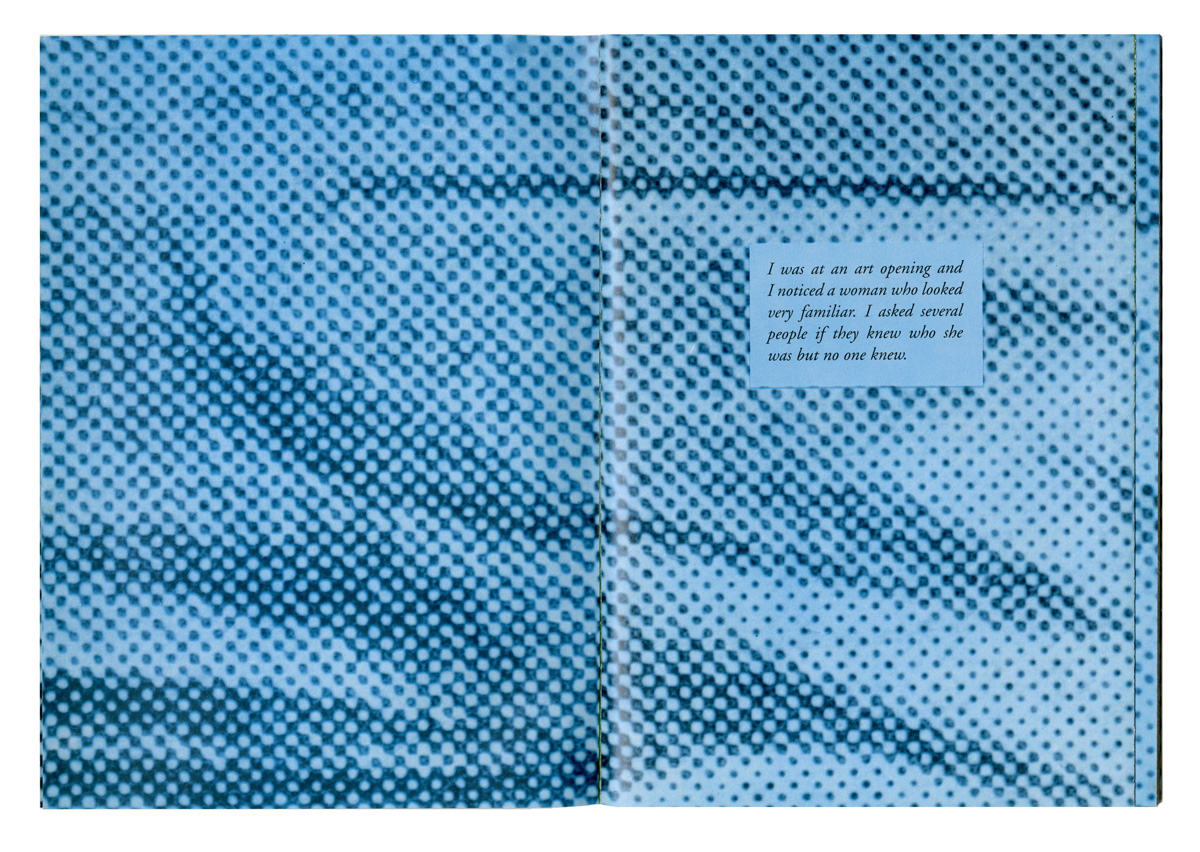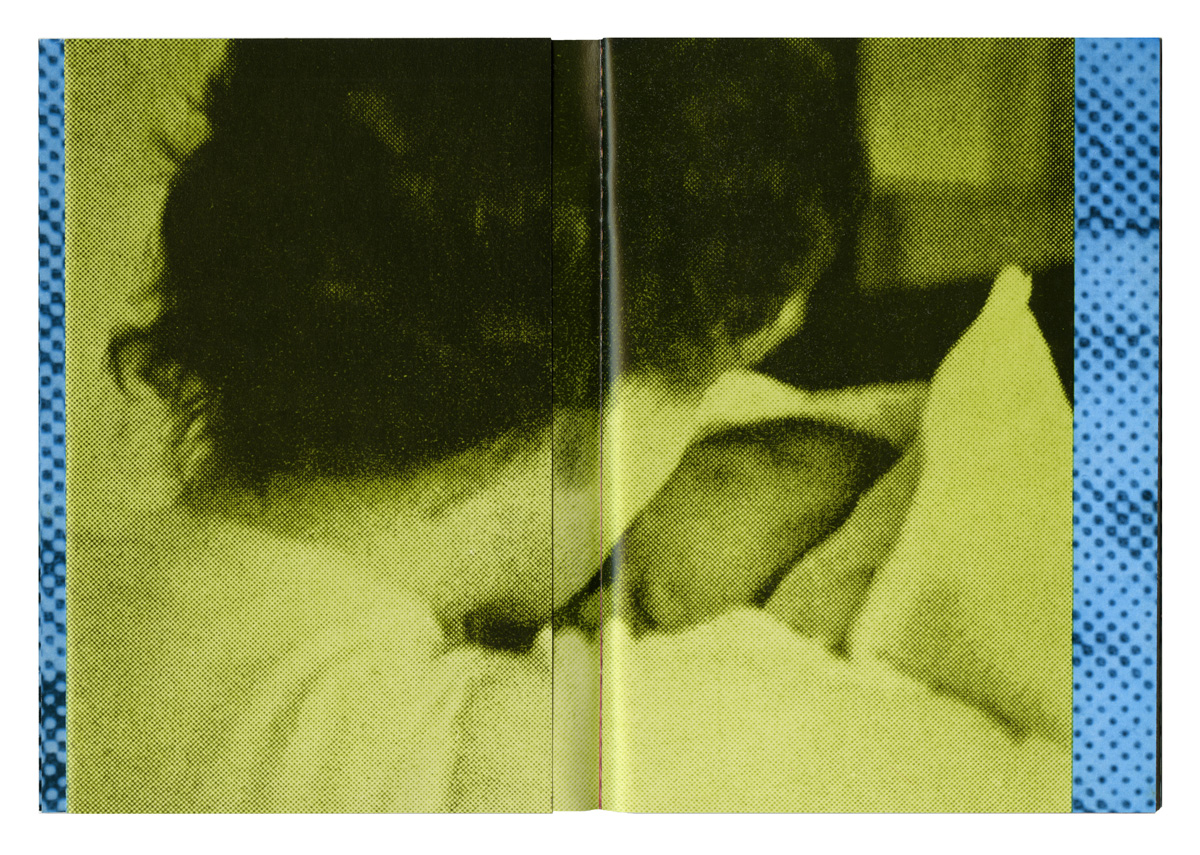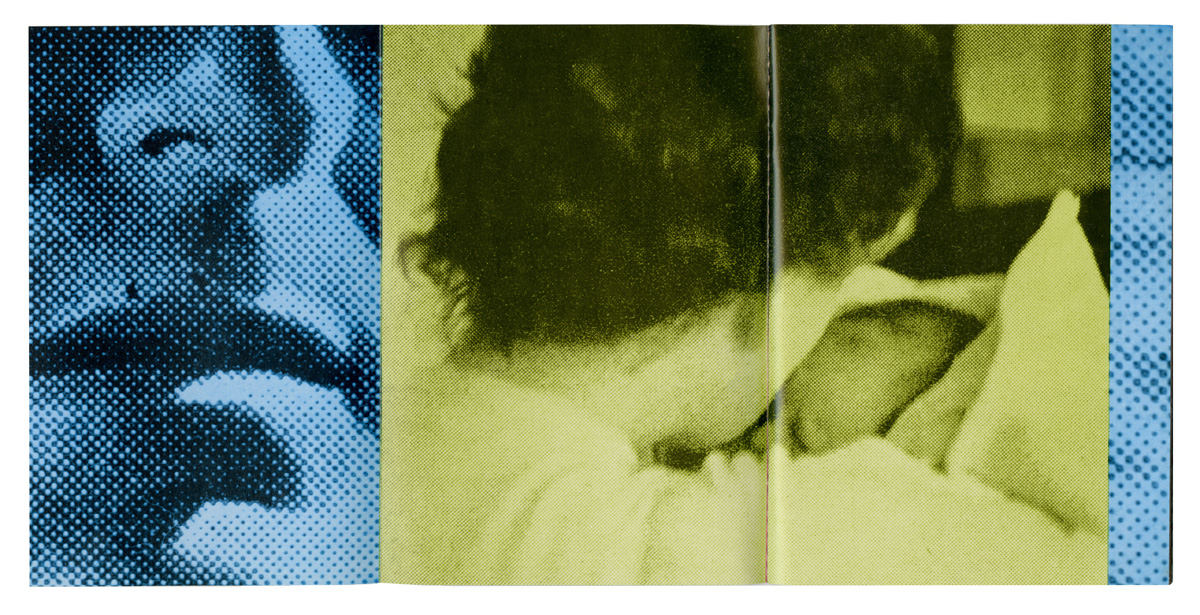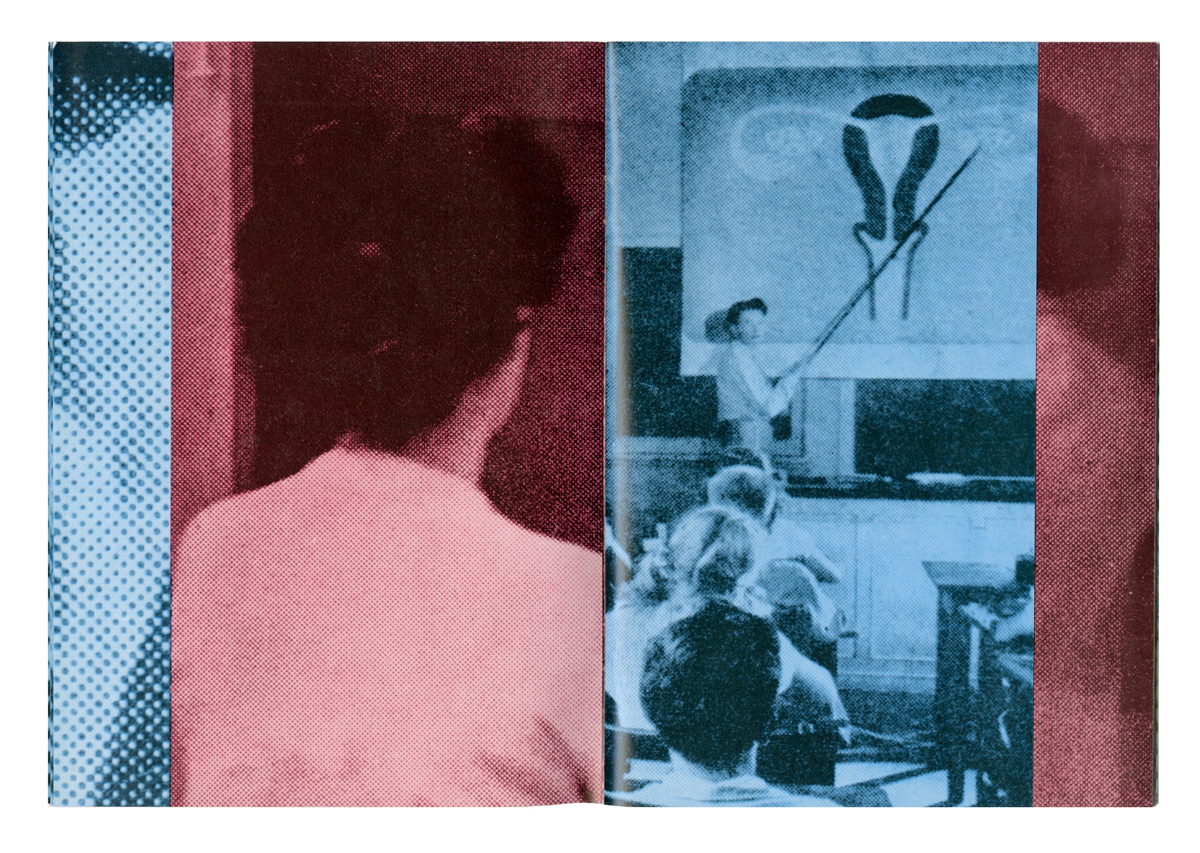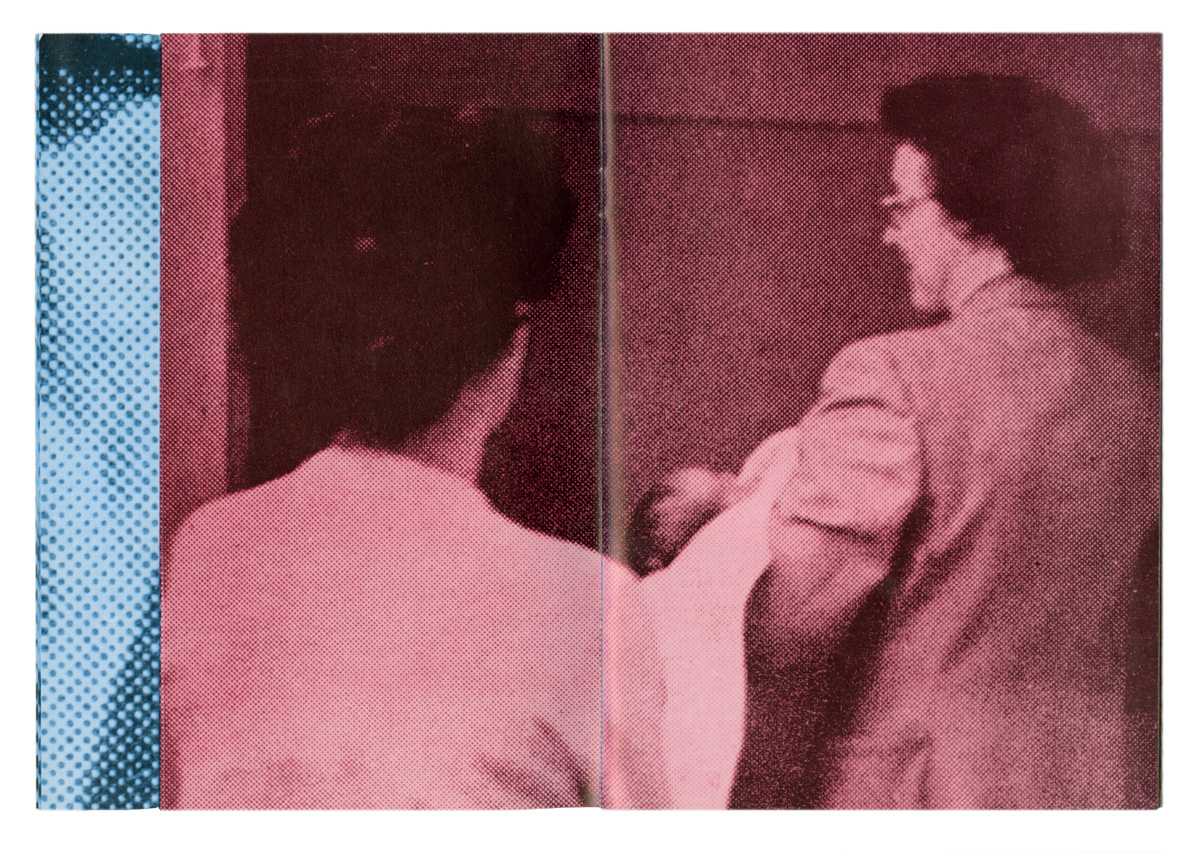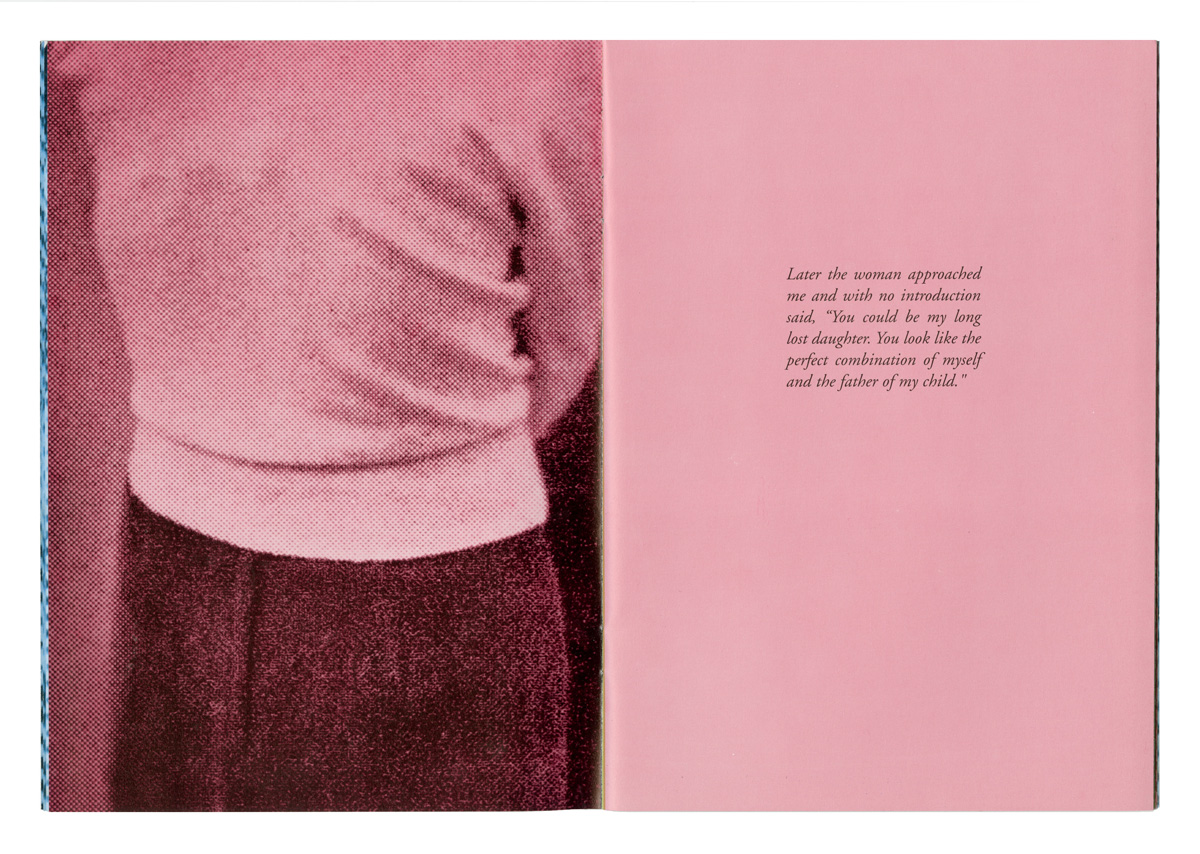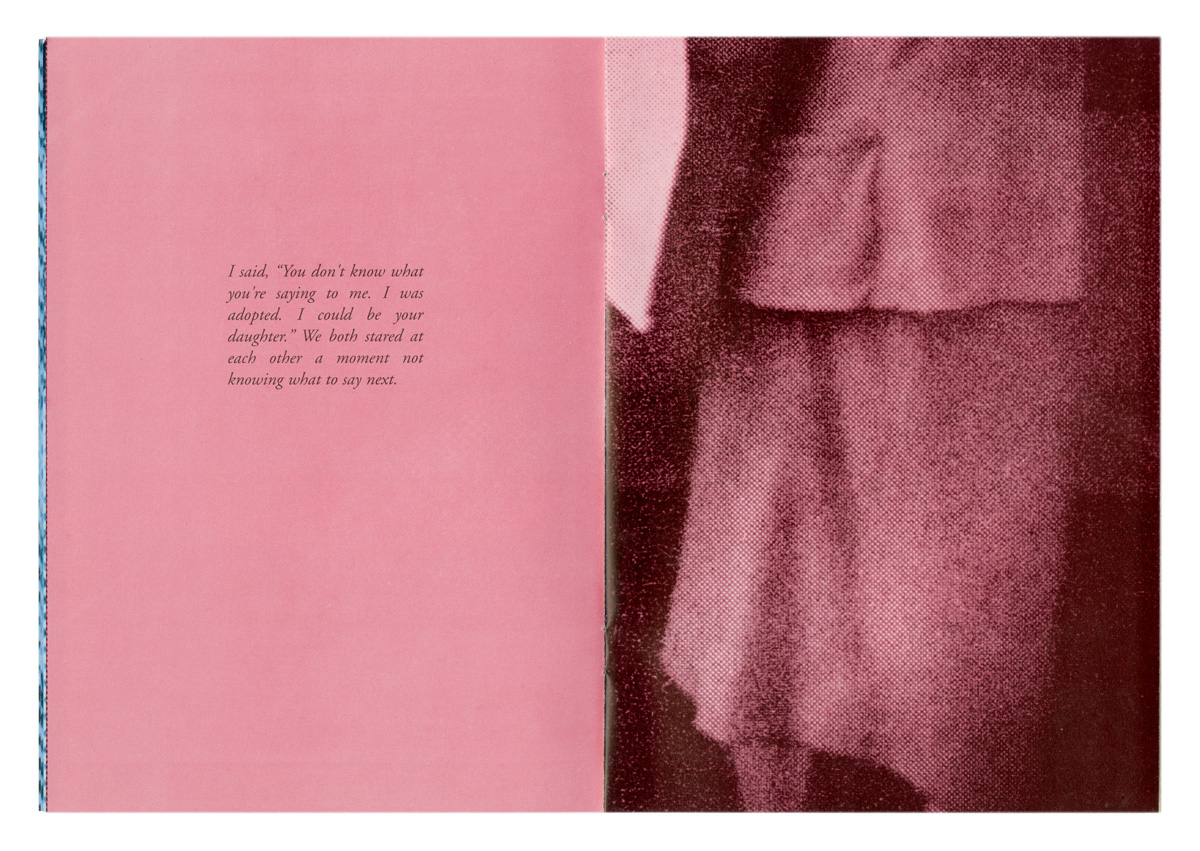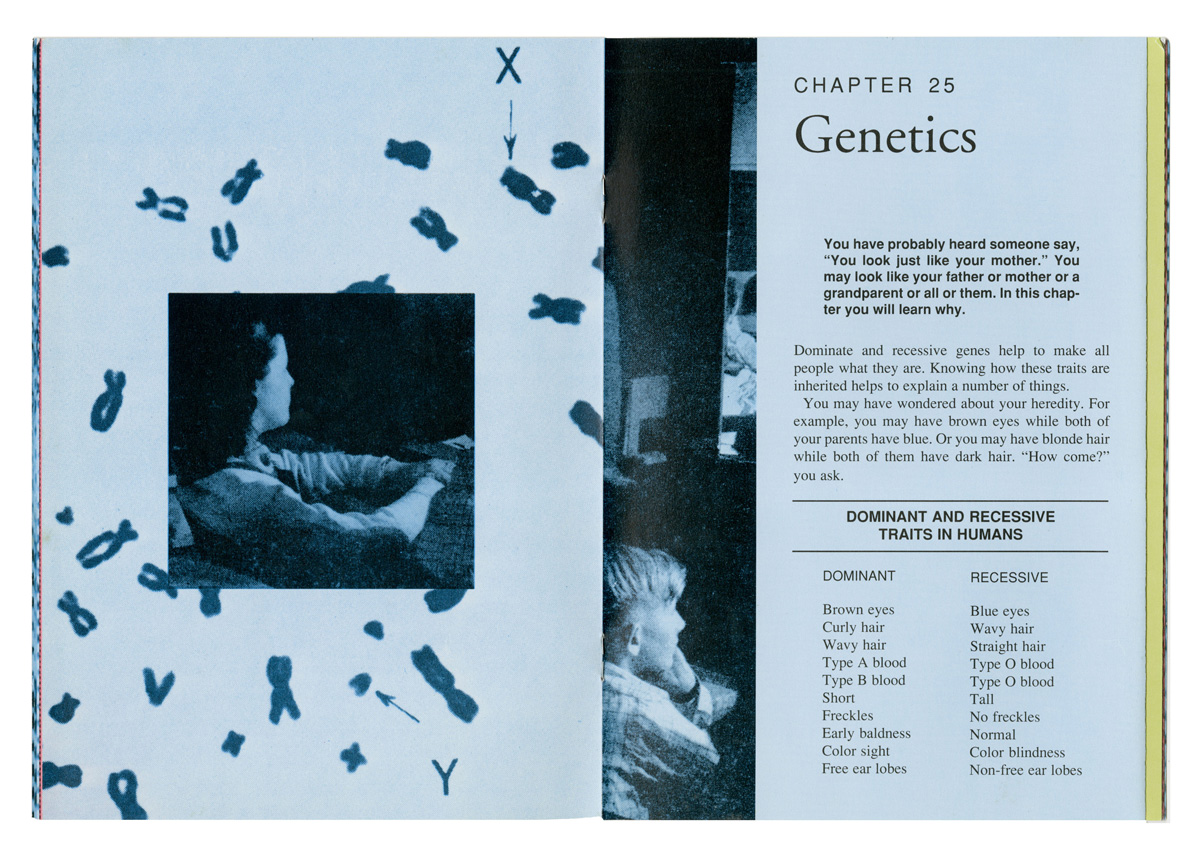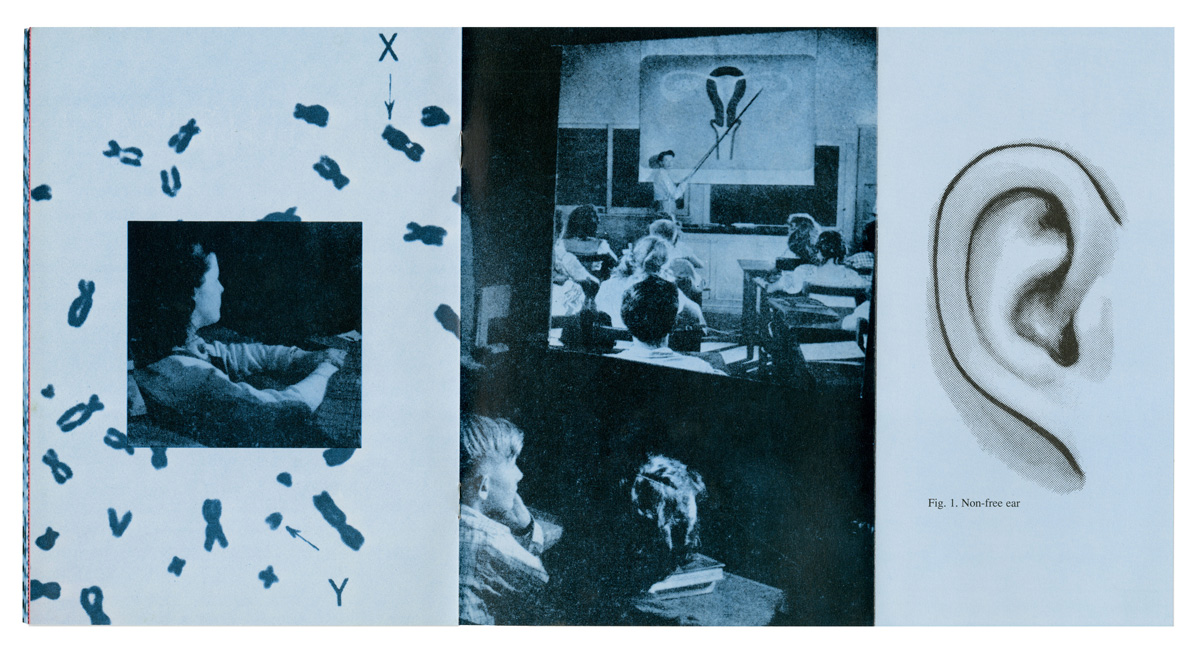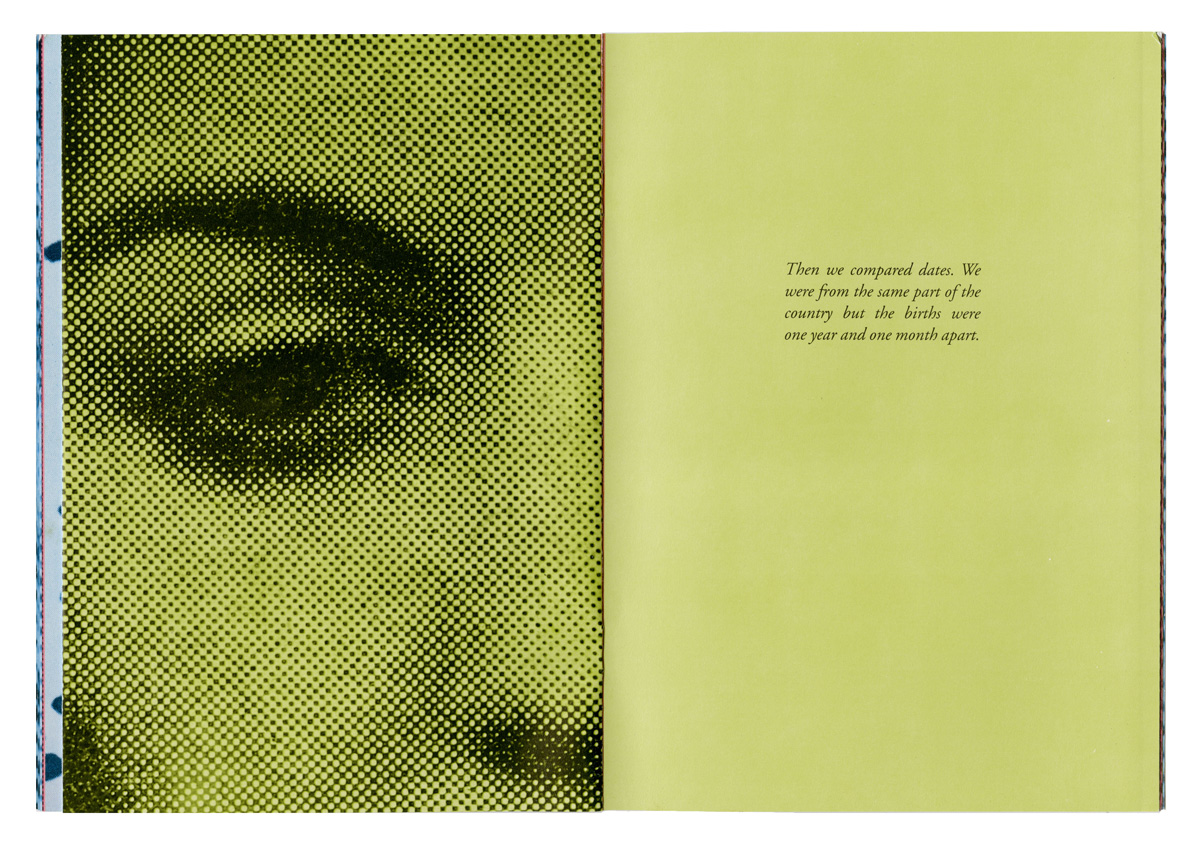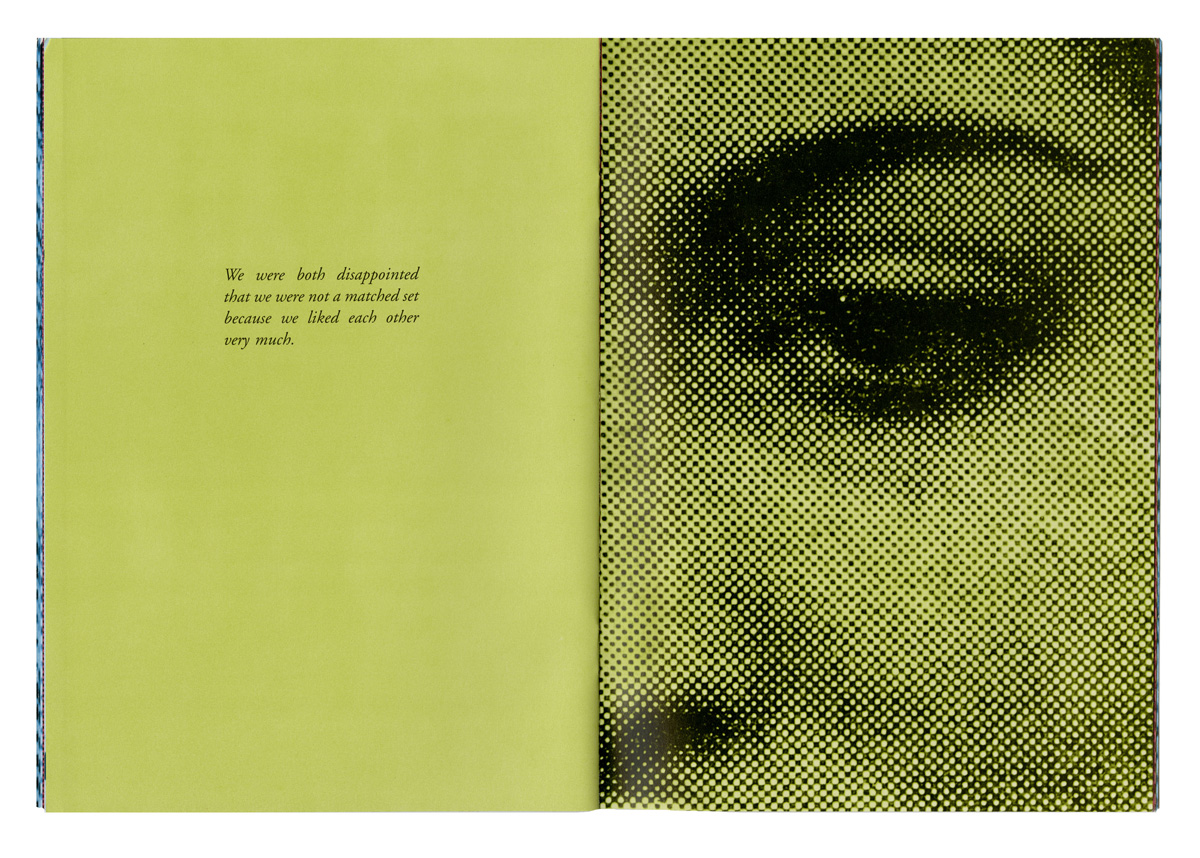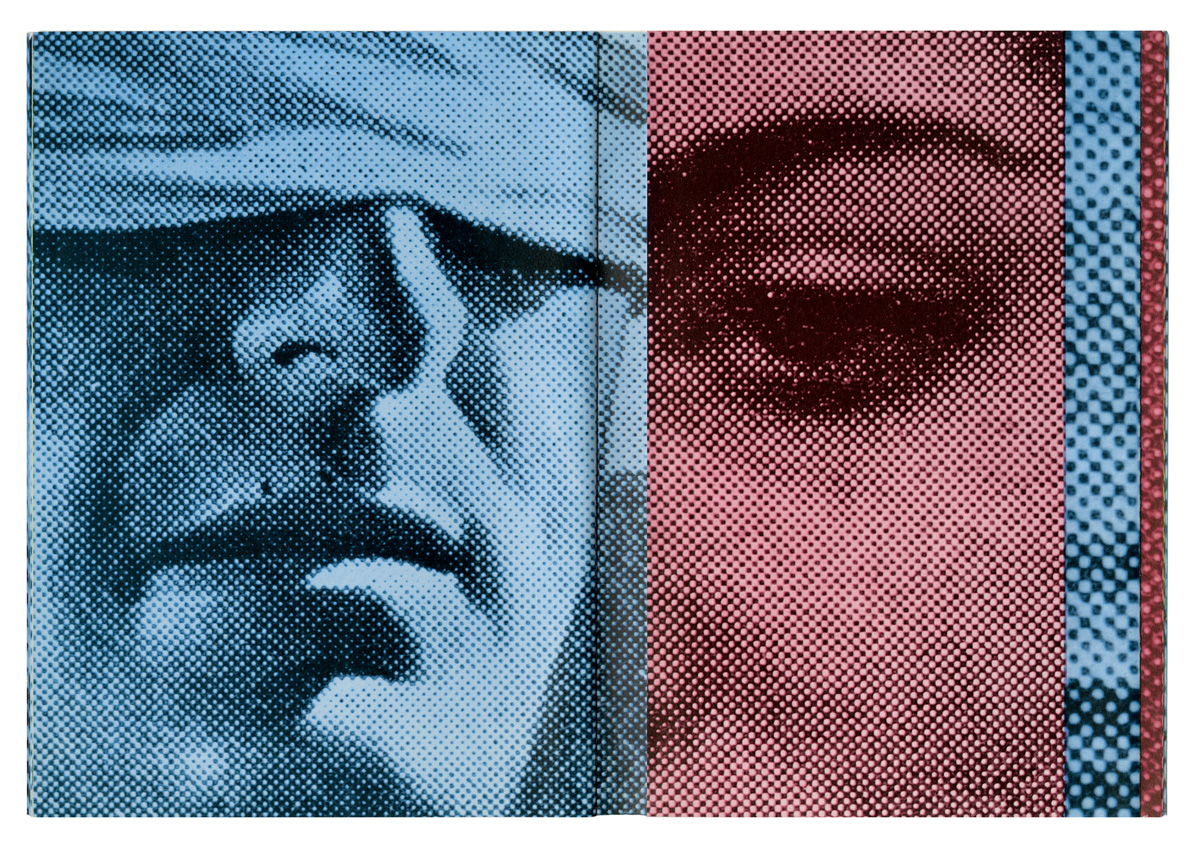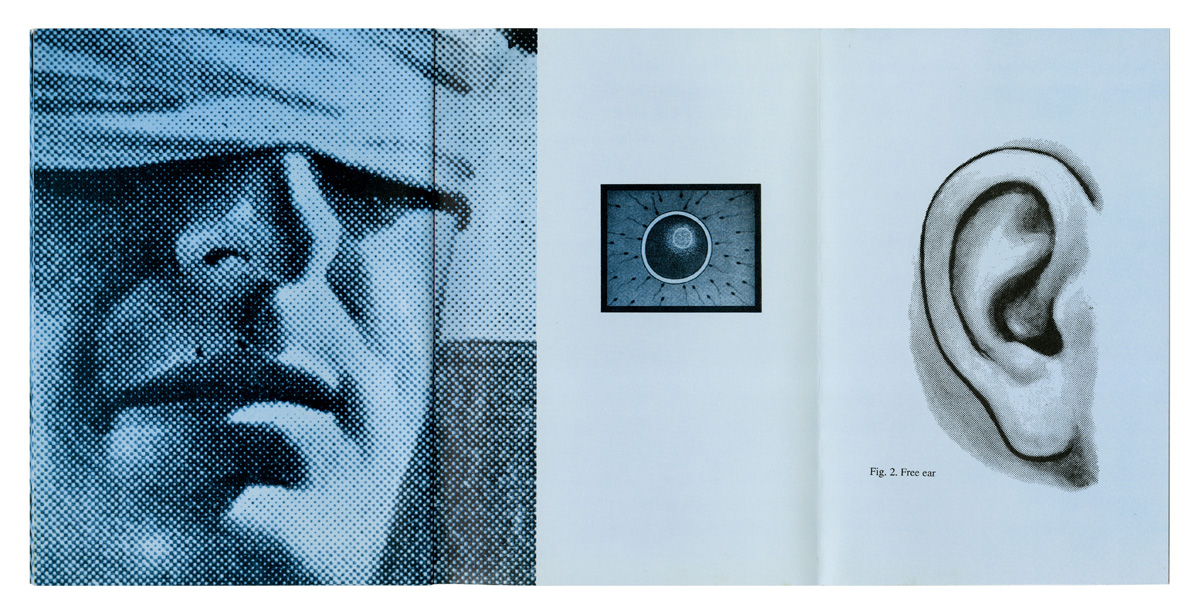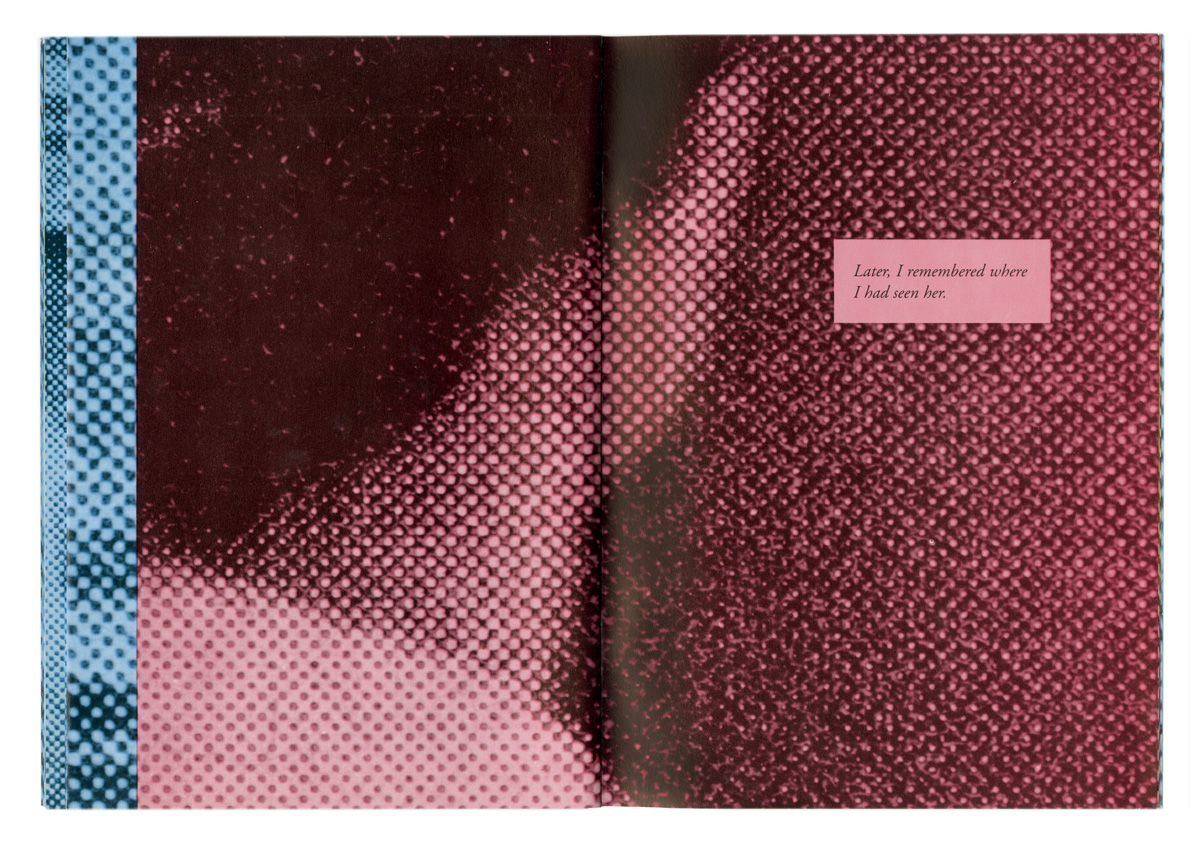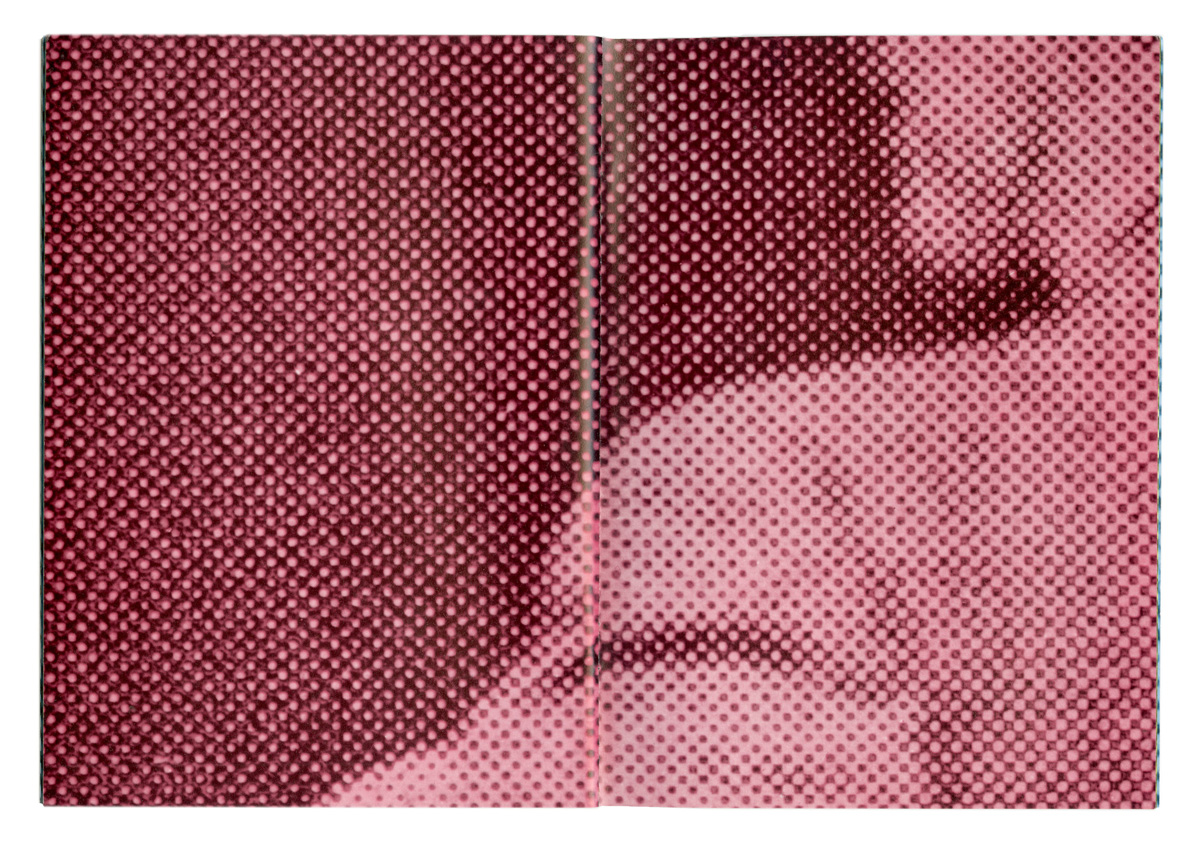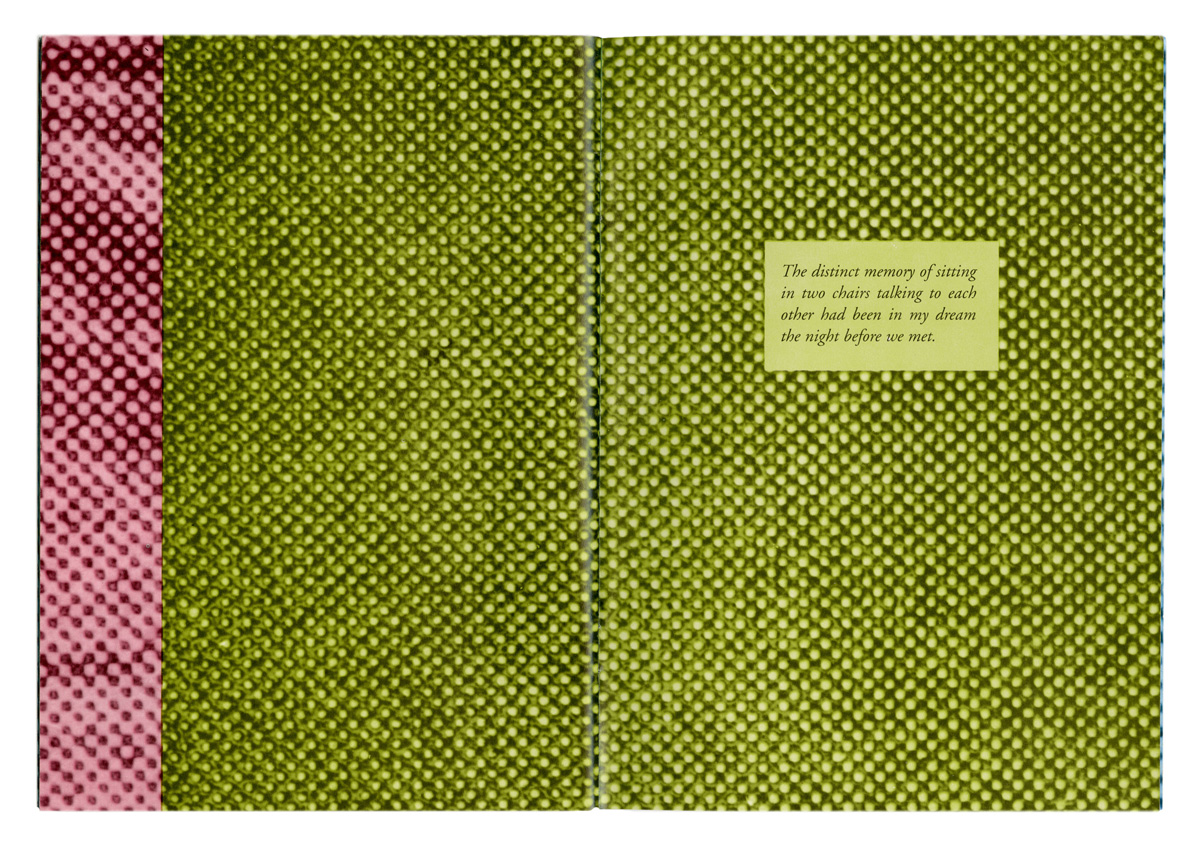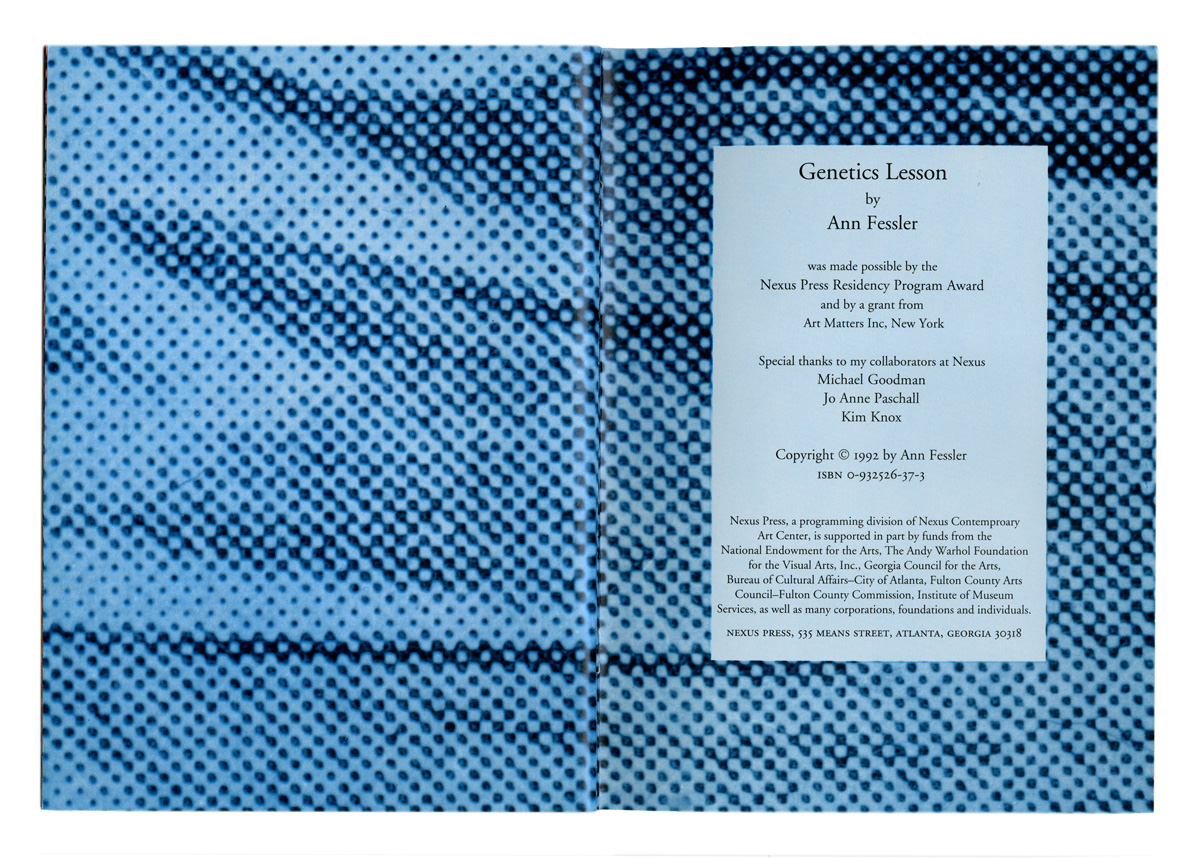Description
Genetics Lesson, Fessler’s sixth Artist’s Book, is based on her 1990 Genetics Lesson installation and is her most structurally complicated artist’s book. It contains numerous gatefolds that allow for multiple readings of the story.
The book opens with a story Fessler recounts in her installation. She is at an art opening and notices a woman who looks very familiar. She asks several people but no one knows the woman. When readers turn the page they find a very close and intimate image of a woman holding a baby up to her face, possibly kissing the child. It then becomes apparent that the image, which fills both pages, has a gate-fold on the left side that can be opened. Opening the page at the fold, viewers see the image of the woman as it was, but also an extreme close-up of a man’s face on the extra fold-out page that extends the horizontal shape of the book. The close-up suggests intimacy between the man and woman, as if he is looking over her shoulder at the child.
At this point, viewers are faced with a decision. They can either fold the image of the man back into the book, or leave him folded out. Folded out, he will remain on the left side throughout the book. The decision to make him part of the story or not is up to the viewer.
On the next double-page spread there is a narrow page that can be turned so that the woman on the left who appears to be standing at the back of a classroom where a lesson in sex education is taking place, is now looking at another woman walking away with a baby. Does this represent a woman who is looking at the lesson and thinking of her own experience, or is she imagining what can happen to the students in the class because the lesson fails to address pregnancy prevention?
Further along we learn that the woman Fessler meets in the gallery believes she is the infant the woman surrendered forty years earlier, and images of a woman walking away with a baby repeat, but cropped much closer.
With a turning of the page again, readers are confronted by a chapter from a textbook titled “Genetics” that starts: “You have probably heard someone say, you look just like your mother. You may look like your father or mother or a grandparent or all of them. In this chapter you will learn why.” Across the page from this statement a small image of a young girl sitting at a school desk is inserted into a sea of X and Y chromosomes, as her classmates sit in the dark and watch the sex education movie. The right gatefold that contains the chapter on genetics can be opened to reveal the image of an ear. The description under the image indicates a “Fig. 1 Non-free ear”, the name given to attached ear lobes in the textbook on the opposite side of the gatefold.
On the following double-page spread, a close-up of the left side of a woman’s face fills the left page and the story continues on the right. The text reads, “Then we compared dates. We were from the same part of the country but the births were one year and one month apart.” When readers turn the page, the layout of the last page is reversed. The right side has a close-up of the right side of a woman’s face. For just a moment when the page is upright, readers can see a whole face. For a fraction of a second both women are made whole, mother and daughter reunited, but the moment is fleeting. When the page is turned all the way the text on the left reads, “We were both disappointed that we were not a matched set because we liked each other very much.”
The book continues with a few surprises in both the textual and visual story. The man readers were introduced to in the beginning appears again, but he is now farther away. With distance we can see more. He is wearing a blindfold. The gatefold opposite him has an example of a detached ear lobe, labeled as “Fig 2. Free ear.”
Information
Genetics Lesson, by Ann Fessler, 1992
Made possible by a Nexus Press Residency Award, Nexus Press, Atlanta, Georgia; and Art Matters, New York.
Out of Print
The Nexus Press Residency Award provided Fessler with the opportunity to spend one month at the press, and to be involved in the pre-press negative and plate-making work, preparing the book for 4-color printing.


